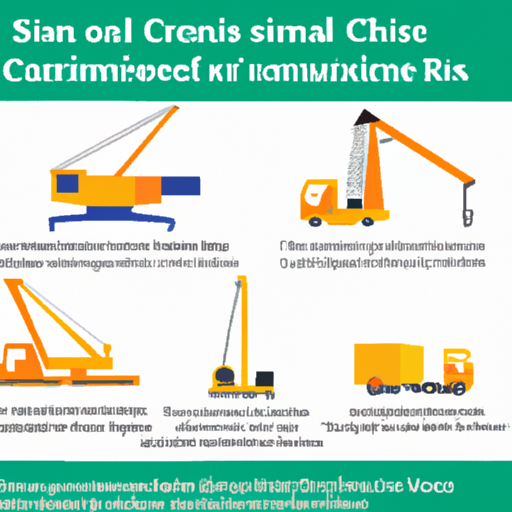Small Crane for Residential Use: Everything You Need to Know
As home renovation and construction projects become more ambitious, homeowners and contractors alike are turning to small cranes for residential use to safely and efficiently move heavy materials. These compact lifting machines are designed specifically for tight spaces, offering flexibility, convenience, and improved safety compared to manual lifting or using larger cranes. In this comprehensive guide, we’ll explore the benefits, types, applications, and key considerations when choosing a small crane for your next residential project.
Why Choose a Small Crane for Residential Work?
- Space Efficiency: Designed to operate in confined spaces, small residential cranes are perfect for backyards, driveways, and narrow alleys.
- Improved Safety: Reduce the risk of injuries from manual lifting or using improper equipment.
- Cost-Effective: Lower rental and operational costs compared to large cranes or hiring extra labor.
- Versatility: Suitable for a range of tasks, from moving hot tubs and HVAC units to lifting roofing materials and landscaping stones.
- Easy Transportation: Many models are portable, with foldable or wheeled designs for simple relocation between job sites.
Types of Small Cranes for Residential Use
Understanding the different types of compact cranes for home construction helps you choose the right equipment for your needs:
- Mini Crawler Cranes: These compact cranes are mounted on tracks, allowing them to traverse uneven terrain and fit through narrow gates or doors. They are commonly used for indoor and backyard lifting tasks.
- Portable Gantry Cranes: Lightweight and easy to assemble, gantry cranes are ideal for garages and workshops. Their adjustable frames can handle various lifting heights.
- Truck-Mounted Cranes: Mounted on pickup trucks or trailers, these cranes offer mobility and are suitable for transporting and lifting heavy materials at multiple sites.
- Articulating Cranes: Also known as knuckle boom cranes, these feature multiple joints for better maneuverability in tight spaces such as side yards or indoor renovations.
- Wall-Mounted Jib Cranes: Perfect for fixed installations in garages, workshops, or home construction sites where lifting is required in a specific area.
Common Applications of Residential Small Cranes
Small residential cranes can transform the way you approach challenging home improvement projects. Some of the most popular uses include:
- Lifting and installing hot tubs, spas, or swim spas in backyards
- Moving heavy landscaping rocks, trees, or garden structures
- Hoisting HVAC units, water tanks, or generators onto rooftops or platforms
- Assisting with home additions, such as placing beams, trusses, or roofing panels
- Transporting building materials—bricks, tiles, windows—across challenging terrain
- Assisting with pool construction or renovation by moving pool shells or liners
Comparing Small Crane Options for Homeowners
| Crane Type | Max Capacity | Typical Reach | Best For |
|---|---|---|---|
| Mini Crawler Crane | 1-4 tons | Up to 20m | Backyards, indoor lifting, tight access |
| Portable Gantry Crane | 0.5-5 tons | Adjustable (height & span) | Garages, workshops, flat surfaces |
| Truck-Mounted Crane | Up to 10 tons | Up to 18m | Multiple sites, material transport |
| Articulating Crane | 1-7 tons | Flexible, jointed arm | Side yards, renovations, complex lifts |
| Wall-Mounted Jib Crane | 0.25-2 tons | Up to 5m | Fixed locations, repetitive lifts |
Key Considerations When Choosing a Small Crane for Home Use
- Lifting Capacity: Evaluate the maximum weight you need to lift and ensure your chosen crane can handle it with a safety margin.
- Worksite Access: Measure entryways, gates, and pathways to select a crane that can physically reach your work area.
- Power Source: Options include electric, diesel, or manual operation—choose based on your environment and convenience.
- Operator Experience: Some small cranes require certified operators, while others are designed for easy, homeowner-friendly use.
- Rental vs. Purchase: If you only have a one-time need, crane rental may be more cost-effective than purchasing equipment.
- Safety Features: Look for cranes with stabilizers, overload protection, and intuitive controls.
Related LSI Keywords
When researching or searching for a small crane for residential use, consider using related terms such as home mini crane, compact crane for home construction, residential lifting equipment, portable crane for homeowners, and backyard crane rental to find the best options and suppliers in your area.
Frequently Asked Questions About Small Residential Cranes
- Can I operate a small crane myself?
- Many small cranes are designed for ease of use, but always check local regulations—some projects or crane types may require certified operators.
- What maintenance is required?
- Basic maintenance includes regular inspections, lubricating moving parts, checking cables and safety mechanisms, and keeping the crane clean. If renting, the provider typically handles maintenance.
- How much does it cost to rent a small crane for residential use?
- Rental prices vary by crane type, duration, and location, but expect to pay anywhere from $100 to $500 per day, with discounts for longer terms.
- Are small cranes safe for indoor use?
- Yes, many mini cranes and gantry cranes are designed for safe, low-emission operation indoors. Always ensure proper ventilation and follow safety guidelines.
Conclusion
Investing in or renting a small crane for residential use can dramatically increase the safety and efficiency of your home improvement projects. By understanding the different types, capabilities, and key considerations, you can select the ideal lifting solution for your unique needs—whether you’re a homeowner tackling a backyard makeover or a contractor managing multiple renovation sites.
